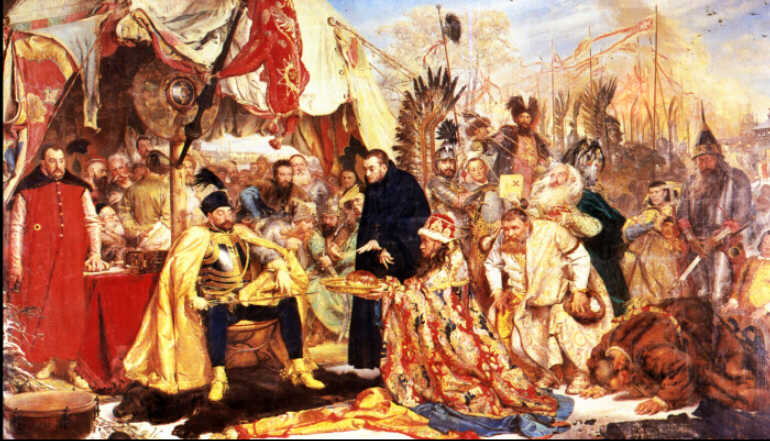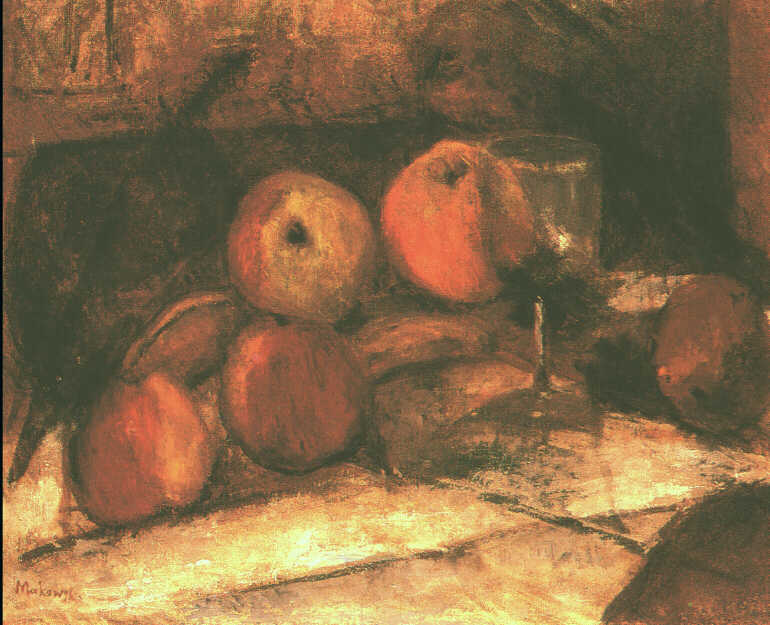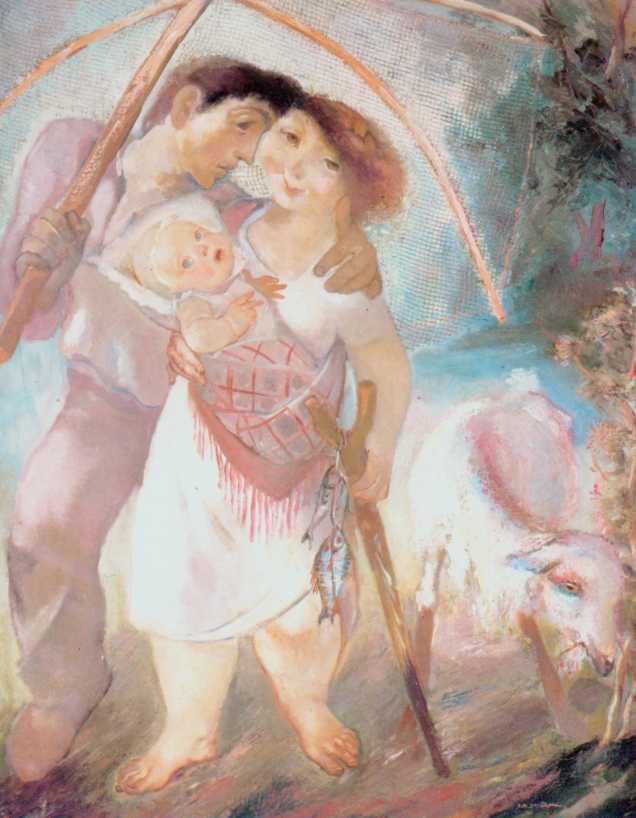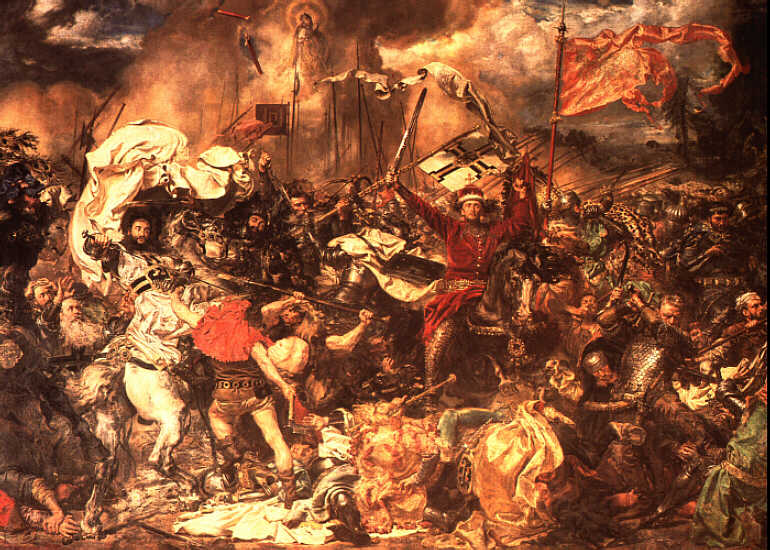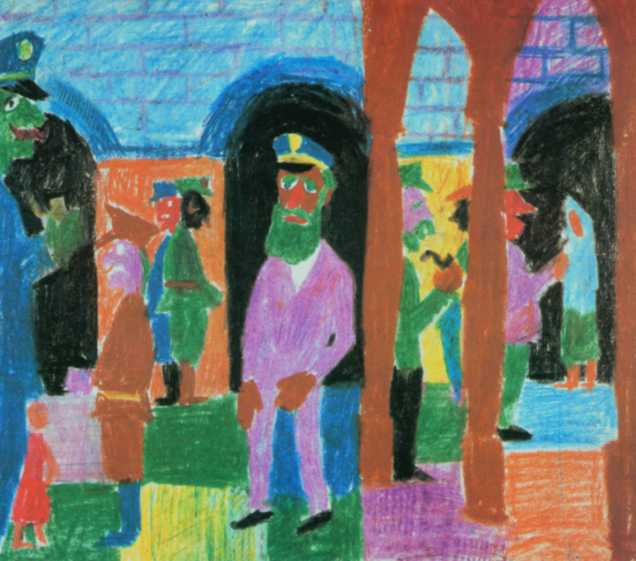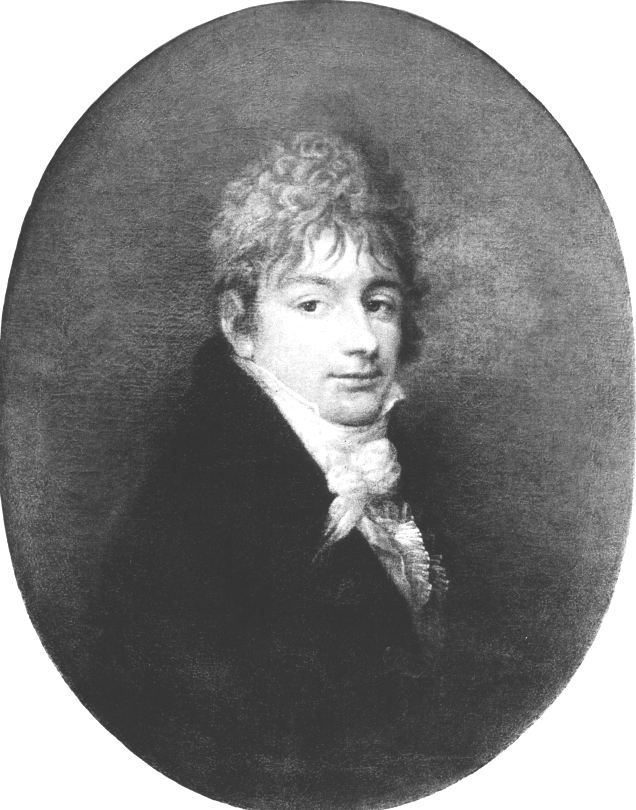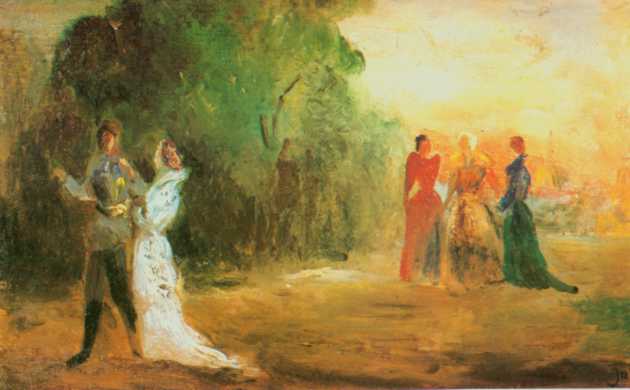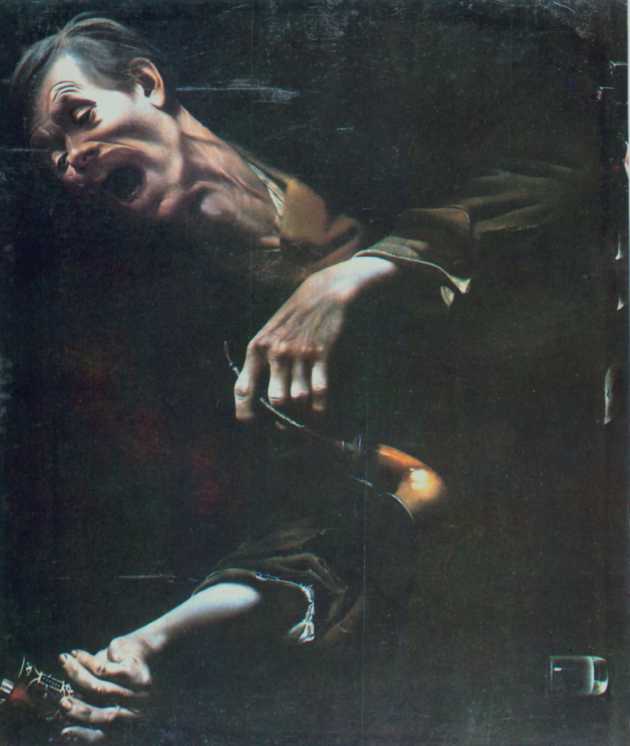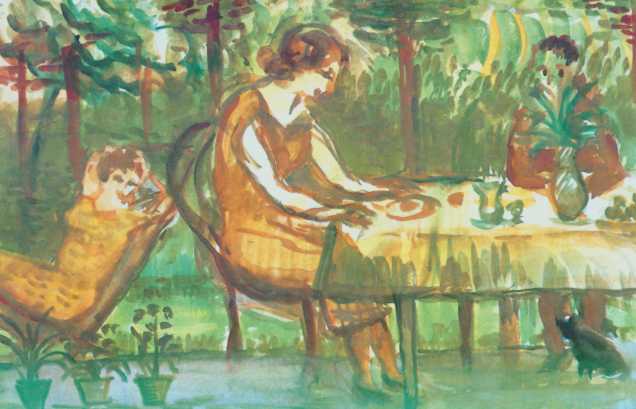Matejko, Jan: Complaint's sermon
Complaint's sermon, 1864
oil, canvas, 224 x 397 cm;
National Museum in Warsaw
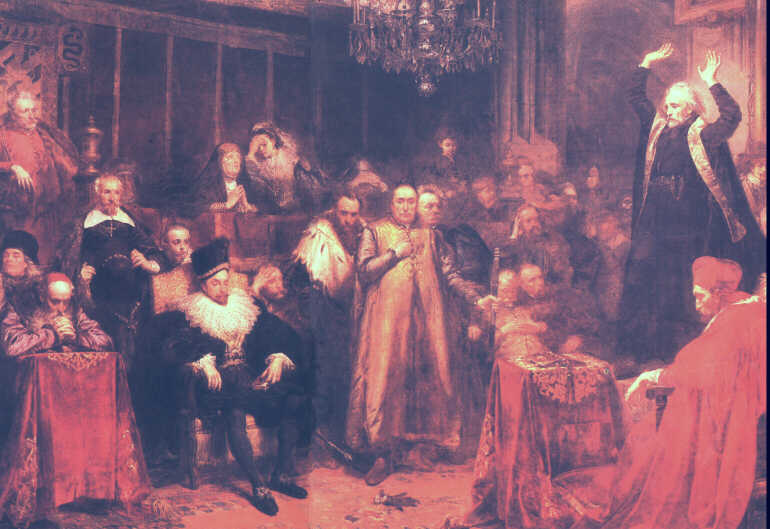
oil, canvas, 224 x 397 cm;
National Museum in Warsaw

“No Pole has painted anything like it” – wrote Fr. Sermon of Complaints one of the critics (Stanisław Tarnowski). Substantially, in this work of a mere 26-year-old artist his peculiarity was fully revealed, almost unheard of in other historical painters, a sense of history as a cruel mechanism of causes, consequences and effects; a constantly rotating tragic wheel, which lifts up and destroys nations to nothingness.
Matejko painted a picture that was not so much historical, what historiosophical, gave a profound analysis of past events and their impact on subsequent events.
In the magnificent nave of the Wawel cathedral, the Jesuit preacher Piotr Skarga (1536-1612) foretells the audience (m.in. King Sigismund III Vasa) future national misfortunes. In the center a group of three aristocrats with Mikołaj Zebrzydowski – organizer of the rebellion against the king – at the forefront.
They and their like, defenders of the misunderstood “golden freedom” they were the perpetrators of the more and more inevitable doom of Poles.
“You will not only be without a master […] but also without a homeland and kingdom, exiles wretched everywhere, despised, poor vagrants […]” – wrote Piotr Skarga in one of his own – never delivered in this form – Sejm sermons.
In a painting by Jan Matejko two years later Rejtanie the three Rococoans will turn into three national traitors, and in the third link of this painful triptych, v Cramped Poland, painting made in the year 1863, the place of the traitors will be taken by the tsarist torturers, who are chained the enslaved nation, and the dignified interior of the Wawel temple will turn into a ruined one, the church soaked with blood.
Matejko painted a picture that was not so much historical, what historiosophical, gave a profound analysis of past events and their impact on subsequent events.
In the magnificent nave of the Wawel cathedral, the Jesuit preacher Piotr Skarga (1536-1612) foretells the audience (m.in. King Sigismund III Vasa) future national misfortunes. In the center a group of three aristocrats with Mikołaj Zebrzydowski – organizer of the rebellion against the king – at the forefront.
They and their like, defenders of the misunderstood “golden freedom” they were the perpetrators of the more and more inevitable doom of Poles.
“You will not only be without a master […] but also without a homeland and kingdom, exiles wretched everywhere, despised, poor vagrants […]” – wrote Piotr Skarga in one of his own – never delivered in this form – Sejm sermons.
In a painting by Jan Matejko two years later Rejtanie the three Rococoans will turn into three national traitors, and in the third link of this painful triptych, v Cramped Poland, painting made in the year 1863, the place of the traitors will be taken by the tsarist torturers, who are chained the enslaved nation, and the dignified interior of the Wawel temple will turn into a ruined one, the church soaked with blood.
